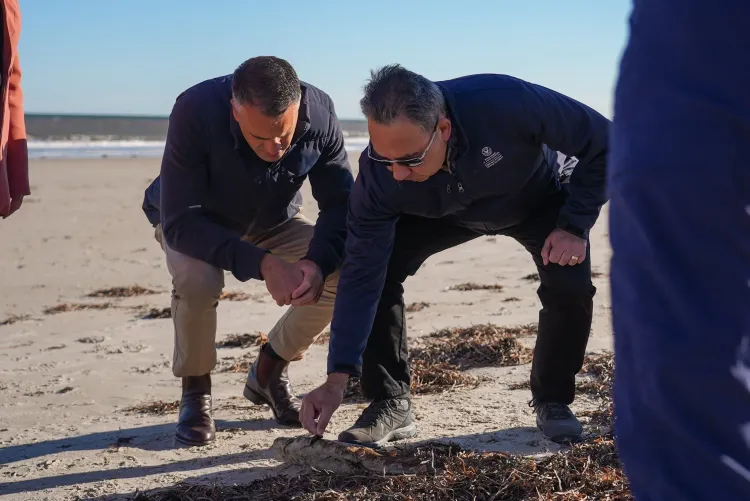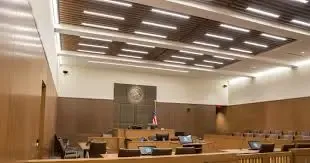Will the Australian Government Fast-Track the Assessment of the Toxic Algae Outbreak on Marine Species?

Synopsis
Key Takeaways
- The Australian government is fast-tracking the assessment of a toxic algal bloom.
- Thousands of marine creatures have already succumbed to the outbreak.
- Over 400 species are reported to be affected.
- An urgent investigation is underway to consider adding impacted species to the threatened list.
- Joint funding of 28 million Australian dollars has been allocated for response efforts.
Canberra, Aug 13 (NationPress) The Australian government has declared on Wednesday its intention to expedite an evaluation regarding whether any flora and fauna impacted by a toxic algal bloom along the southern coast should be included on the threatened species list.
Murray Watt, the Minister for the Environment and Water, stated during his visit to South Australia (SA) that he will fast-track an expert evaluation concerning the repercussions of the toxic algae on marine life.
The toxic algae Karenia mikimotoi was first identified off the coast of SA in March, leading to the demise of thousands of marine species, including sharks, octopuses, and penguins, across a stretch of 500 kilometers.
Watt remarked that the outbreak has inflicted a devastating impact on over 400 species.
He has reached out to the chairperson of the Threatened Species Scientific Committee (TSSC), which provides guidance to the government on updates to the threatened species list, to promptly assess if any species require inclusion due to the algal outbreak.
Once a species is formally recognized as threatened, a legally binding recovery plan can be established and implemented until it is removed from the list, as reported by Xinhua news agency.
“We must thoroughly investigate the effects on local marine life to initiate investments in suitable strategies to restore these vital animals to healthy populations,” Watt expressed.
On Wednesday morning, authorities from the SA National Parks and Wildlife Service (NPWS) retrieved a deceased dolphin that had washed ashore at Henley Beach in Adelaide’s western suburbs.
The NPWS indicated that a necropsy would be conducted to ascertain the cause of death, although marine mammals are not currently considered at immediate risk from the algal bloom.
The SA Department of Environment and Water suggested that a marine heatwave and increased nutrients from flooding might have contributed to the bloom. The department asserts that no human intervention can effectively dilute or disperse the algae.
In July, both the federal and SA state governments allocated 28 million Australian dollars (approximately 18.3 million US dollars) for response efforts to the bloom, encompassing scientific research and cleanup operations.
Watt apologized on Monday to South Australians who criticized both governments for a sluggish response to the crisis. Prime Minister Anthony Albanese is set to visit the algal bloom site later in August.









